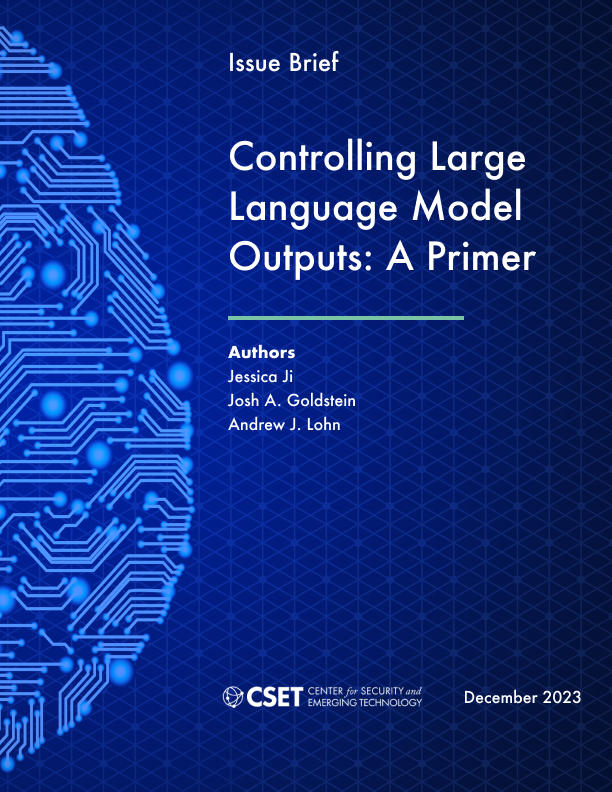Executive Summary
Concerns over risks from generative artificial intelligence (AI) systems have increased significantly over the past year, driven in large part by the advent of increasingly capable large language models (LLMs). Many of these potential risks stem from these models producing undesirable outputs, from hate speech to information that could be put to malicious use. However, the inherent complexity of LLMs makes controlling or steering their outputs a considerable technical challenge.
This issue brief presents three broad categories of potentially harmful outputs—inaccurate information, biased or toxic outputs, and outputs resulting from malicious use—that may motivate developers to control LLMs. It also explains four popular techniques that developers currently use to control LLM outputs, categorized along various stages of the LLM development life cycle: 1) editing pre-training data, 2) supervised fine-tuning, 3) reinforcement learning with human feedback and Constitutional AI, and 4) prompt and output controls.
None of these techniques are perfect, and they are frequently used in concert with one another and with nontechnical controls such as content policies. Furthermore, the availability of open models—which anyone can download and modify for their own purposes—means that these controls or safeguards are unevenly distributed across various LLMs and AI-enabled products. Ultimately, this is a complex and novel problem that presents challenges for both policymakers and AI developers. Today’s techniques are more like sledgehammers than scalpels, and even the most cuttingedge controls cannot guarantee that an LLM will never produce an undesirable output.
